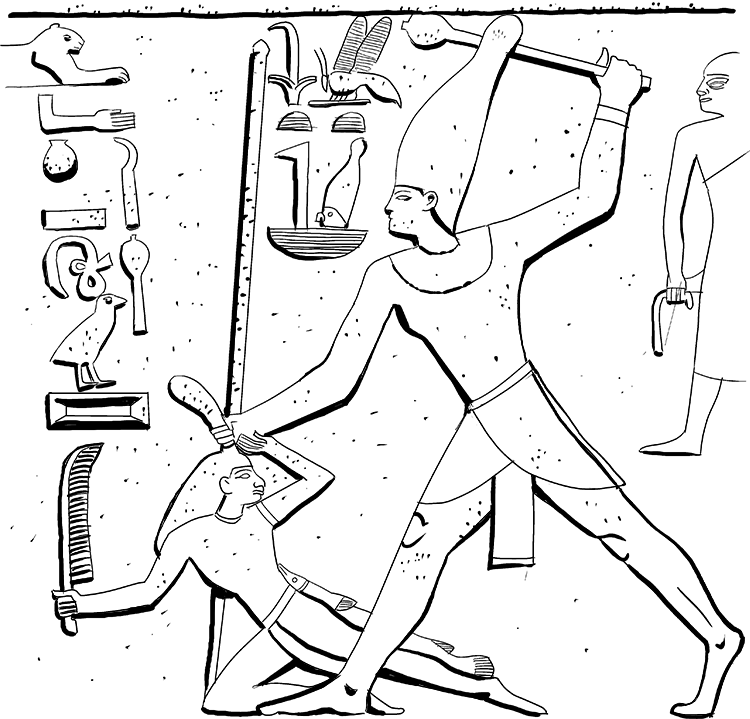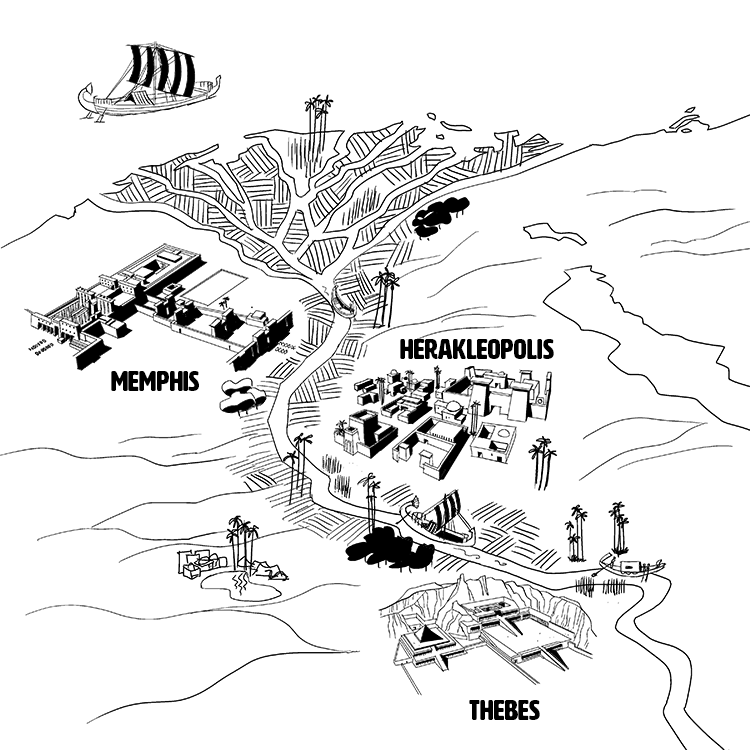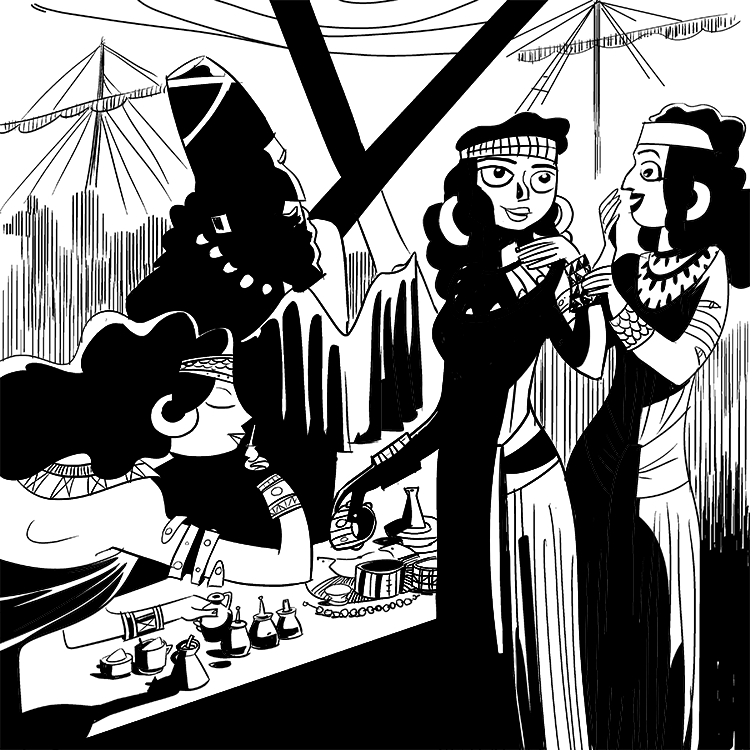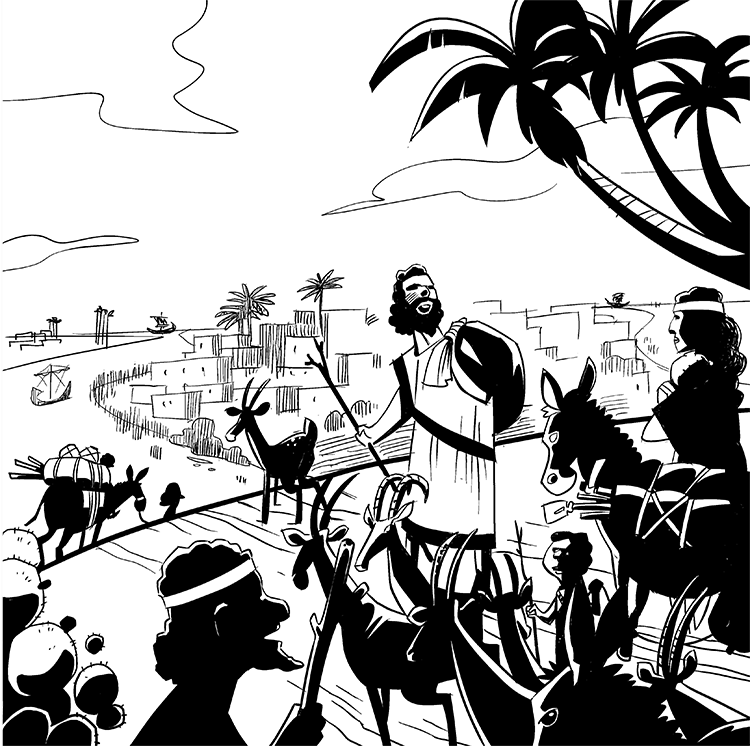In the 150 years before the Middle Kingdom, Ancient Egypt was at war with itself. The stability that had been achieved during the Old Kingdom had disappeared, and the many cities of the Nile were fighting each other for control.
Eventually, Thebes, a small but growing city in Southern Egypt, emerged as the most powerful of them all. This allowed for the formation of a new, more stable government, one that made centuries of prosperity possible in Ancient Egypt.

Mentuhotep Conquers
King Mentuhotep II, son of Intef III and descendant of Intef, finished what his ancestors started and conquered Herakleopolis.
The Rise of the Middle Kingdom
Towards the end of the Old Kingdom, provincial governors became too independent and powerful for any one king to control. In ancient Egypt, these governors were called nomarchs, which comes from the Egyptian word nome, meaning territory.
In the early days of the Old Kingdom, nomarchs made a unified Egypt possible by carrying out the will of the king in Egypt’s faraway provinces. But as Egypt grew and expanded, these nomarchs became increasingly difficult to control, especially those ruling far from the capital in Memphis.
Eventually, they became so powerful that the Old Kingdom crumbled.
It’s a tale as old as time — parents give their children some freedom, and then before too long, the kids are running the show.
Once the Old Kingdom fell, nomarchs were free to rule their territories independently from one another and also from any central authority. This freedom allowed them to collect taxes, pass laws, raise armies, wage war, and do whatever else they pleased without worrying what some other king might say or do.
Aware that their grip on power was disappearing, the Old Kingdom kings of Memphis made a last ditch effort to maintain their authority by moving their capital south to the larger city of Herakleopolis. But it turns out the people of Herakleopolis didn’t really want a new king. So when the nomarch of the southern city of Thebes, known as Intef, challenged the kings at Herakleopolis, he found an audience and incited a rebellion. This revolt was put down, but the damage was already done. The Old Kingdom was on its last breath.
Finally, about a hundred years and many battles after the rebellion, King Mentuhotep II, son of Intef III and descendant of Intef, finished what his ancestors started and conquered Herakleopolis. Now there was no denying the power of Thebes.

Ancient Egypt Cities
Memphis. Herakleopolis, Thebes
Government During the Middle Kingdom
The fall of Herakleopolis removed the kings of the Old Kingdom and unified Egypt. But the nomarchs from the previous kingdom remained, and Mentuhotep II knew that securing his claim to the throne meant subduing these powerful provincial governors.
The first step towards consolidating power was to make the most important city in a region the primary seat of government. This allowed for new governors to step in, ones that would be loyal to the kings in Thebes.
Later in the Middle Kingdom, Senusret III took another step towards centralizing power by dividing Egypt into three regions — North, South, and the Head of the South (an ill-defined region that probably consisted of the kingdoms around Thebes). By doing this, he was able to install new government officials to oversee regional governors.
All these changes more or less destroyed the nomarch system of government that had existed during the Old Kingdom. Some nomarchs, those who had proven their loyalty, took on new positions in this new system, but they were nowhere near as powerful as they had once been.
Such changes went a long way towards restructuring Egyptian government and putting more power into the hands of the Theban pharaohs. But religion provided them with an even stronger claim to power. Specifically, the Theban kings asserted themselves as gods in human form. This close connection between gods and kings helped make the Middle Kingdom powerful enough to unify Egypt.

Conquest and Connections
Connections and conquests brought luxury goods such as gold, silver, silk, incense, etc. into Egypt.
Accomplishments of the Middle Kingdom
As is often the case with powerful, ambitious rulers, the Theban kings of the Middle Kingdom were not satisfied ruling over just Egypt. In fact, conquering new territories outside Egypt was one of their top priorities. The Ancient Egyptians were nearly always at war with someone.
During the Middle Kingdom, Egyptian armies conquered Nubia, a powerful kingdom to the South of Egypt, as well as the Sinai peninsula. Further expeditions brought Egyptian armies as far east as Palestine, which connected them to the trade networks of western Asia and beyond.
These connections and conquests brought luxury goods such as gold, silver, silk, incense, etc. into Egypt. But it also increased the power of the Egyptian pharaoh. It was one thing to rule over all of Egypt but quite another to rule an overseas empire.
And what does the ruler of a rich, expansive, and powerful empire do? Well, they build things, of course!
It’s true that nothing could outdo the pyramids built during the Old Kingdom, but the New Kingdom dynasties came close with the Karnak Temple. Over 200 acres in size, this shrine to the patron god of Thebes — Amun (later Amun-Ra) — is still one of the largest religious complexes in the world.
Almost every king who ruled in the Middle Kingdom did something to this temple. Usually, they either built something new or added to an existing structure. But sometimes, as a way of really showing off their power, they destroyed what previous kings had built and installed something new.

The Hyksos
The Hyksos were merchants and traders that came from the east and settled in the Nile delta, in the city of Avaris.
The Fall of the Middle Kingdom
After about 200 years of rule under one family, the throne passed to the 13th dynasty. But it turns out thirteen was an unlucky number for the Egyptians, for this was the final dynasty to rule in the Middle Kingdom.
Superstition aside, this transition led to the downfall of the Middle Kingdom for a number of reasons.
First, records indicate that no king was able to rule for very long (no more than ten years) during the early stages of the 13th dynasty. This lack of stability weakened Thebes and opened the door for someone else to take power. But unlike in the past when other Egyptian rulers jumped on the weakness of the king for their own personal gain, this time the threat came from abroad.
Specifically, foreigners, people known as the Hyksos, took advantage of the weakening power of Thebes to move into southern Egypt. Eventually, the Hyksos claimed the right to rule Southern Egypt. By this point, Thebes was not strong enough to stop them. The days of the Middle Kingdom had come to an end.
Written by Matthew Jones
Illustrated by Pablo Velarde Diaz-Pache
